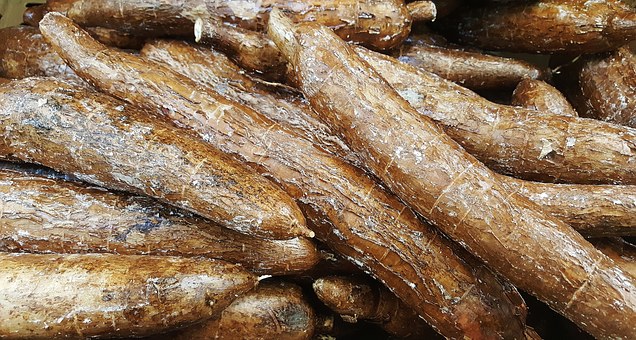
Akong pamahaw balanghoy
Akong paniudto, balanghoy nga puto
Akong panihapon, balanghoy gihapon!
And so the song goes. I hear that when I’m in the farm or when I go around the towns of Cebu province doing heritage work for the archdiocese. It is curious how the girl in the song would say she’s tired because she had balanghoy or Cassava the whole day, because the Balanghoy is a good source of energy as it has a high carbohydrate content.
Scientifically known as Manihot Esculenta, balanghoy or kamoteng Kahoy or cassava is a root crop from South America. It must have come to the Philippines through Mexico.
Most people regard Cassava as a poisonous root crop. The fact is that the roots contain enough cyanide to do harm when ingested. Mountain folk in Cebu have developed a process of removing the poison from the balanghoy. As soon as the balanghoy tubers are harvested, these are peeled and washed very well. Then the tubers are grated and placed inside a big sack which is tightly tied with string. The sack is then placed on top of a big rock and is covered with a piece of wide wood on which another big rock is balanced. This presses the grated balanghoy and the juice flows out. This part of the process lasts for 24 hours, after which the grated balanghoy is spread out in a nigo ( a woven flat basket made of young rattan) and made to dry under the sun. This dried balanghoy is ready to be used in many snack recipes that Cebuanos love. Grated dried balanghoy is highly perishable. It goes stale quickly and has to be consumed within a week.

Puto Balanghoy
In Brazil where cassava is also called manioc, the tribes in the Amazon do the same thing with the cassava or balanghoy. They grate it , place in a sack and let the liquid come out. The difference is that they don’t throw away this liquid from the Cassava, They call it tucupi and add it to sauces.
Cebuanos love balanghoy. Rolling out the names of the sweets made of balanghoy is tantamount to a recitation of sins, past and present. Carbo loading! These are Cassava Bibingka, Budbud Balanghoy, Cassava Cake, Putong Balanghoy, Pichi-pichi, Tinun-an nga Balanghoy, Nilung-ag nga Balanghoy. Most of these recipes call for coconut milk and sugar, brown or muscovado.

Budbod Balanghoy
I heard that cooking balanghoy with coconut milk is one of the ways to remove the poison from the root crop. The last recipe is as simple as boiling small pieces of balanghoy in coconut milk until it is tender. Add sugar and serve.
Balanghoy is also best served simply boiled in coconut milk until dry. You can serve it with muscovado on the side. But you can make people happier if you put a plate of Tinabal sautéed with lots of garlic, tomatoes , slivers of Sibuyas Bisaya and slivers of ginger. By the way, Tinabal is fresh fish fermented in a jar of sea salt.
Inday, sayaw na!
Disclaimer: The comments uploaded on this site do not necessarily represent or reflect the views of management and owner of Cebudailynews. We reserve the right to exclude comments that we deem to be inconsistent with our editorial standards.

